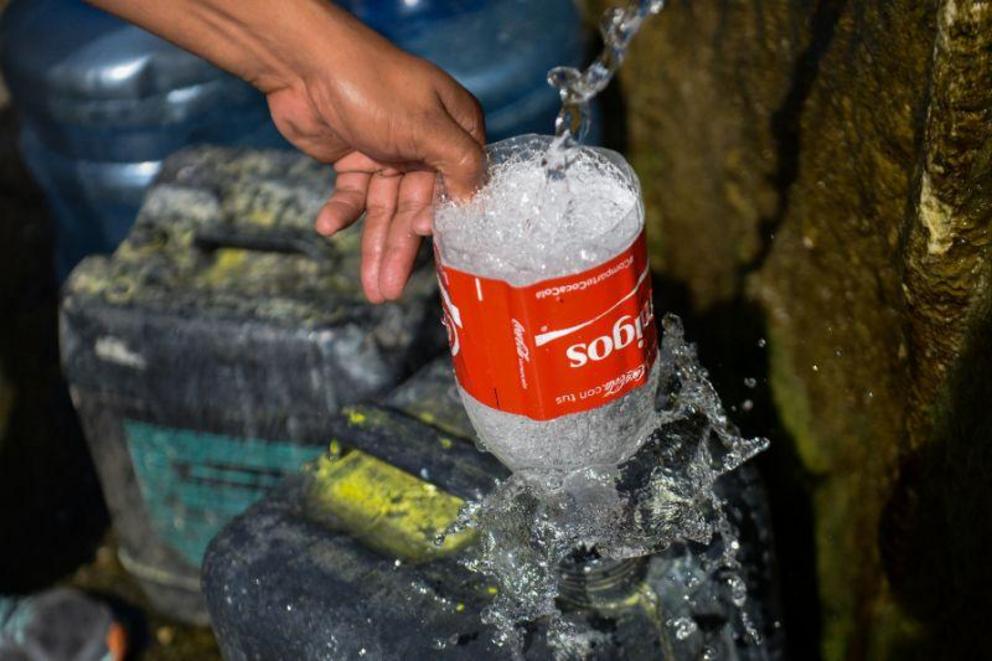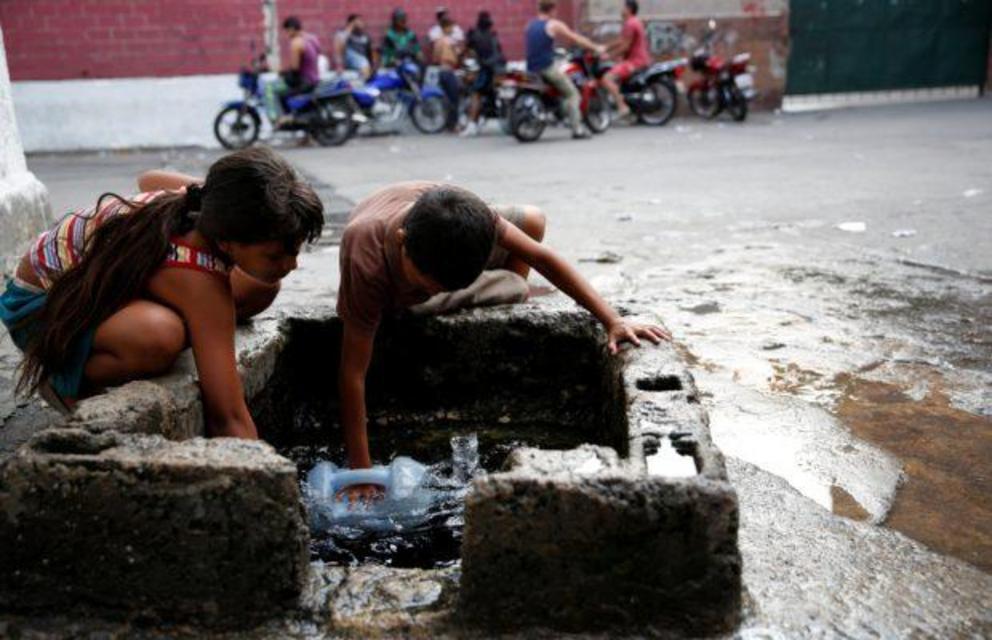Prepping: a self-sufficient water supply for when the water stopped flowing
The writer of these posts is a middle-class Venezuelan prepper, in a country which has the world’s highest inflation rate at more than 4000%. Venezuela is an economic collapse nightmare with extreme shortages of food, violent crime, severe hunger, a crippled economy, crumbling infrastructure, collapsed healthcare system, and a failing government.
If you are at all familiar with survival needs, you will know that everyone needs water to survive. And that’s not just to drink, sure if you are outdoors and lost or trapped you need to drink water. But I am talking about being in the home, when the economy collapses. This is when the pumps fail and the taps stop running, and when you need a self-sufficient water supply
How can our water supply collapse?
In any normal situation, water should be a very easy solution to keep running. You see, water companies pump out well water to an elevated tank from which we all share our tap water from. In a perfect world, this would pump water to your taps with an electrically maintained pressure system. If there were to be a blackout, backup generators would be that pressure so that you have access to water.
But when there’s an economic collapse, it is fail-safes like these that, plainly put, fail. For Venezuelans, when the power goes out at the moment, the water does too. This is because city pumps fail to use suitable backups or ill-maintained backups (I’m not sure if they even have backups at the moment). For whatever the reason, blackouts and no water flow come hand-in-hand.
Why a self-sufficient water supply is important for preppers
It’s in circumstances like a financial collapse that with a little bit of common sense, any decent household owner would have a reserve system that provides water to the house, or stored water so that they can at least fill some buckets and bottles to wash with, drink and feed the garden. For our household, we have a spare 550 gallon above ground water tank that we keep in case of situations like this. I don’t think we’d really last without it. Some people seem to be content stockpiling water in bottles or in their bathtub, but in all reality, for us, we get extended power cuts that last 5 or 6 days in Venezuela. This is also a short timeframe if you consider that, in an economic collapse, it is likely that a public service might not have the parts to fix the problem, let alone the technical specialties in their employees, as most of them would have been made redundant.
I have also seen this happen in the US as well, in circumstances where disasters have cut water supplies, leaving areas without running water for a week or more. And let’s not forget Capetown, in South Africa, and their severe water shortage where an entire city was about to run out of its water supply. Call me paranoid for having a huge water tank in my backyard, but it’s water, and it’s something my family and I need to live.

With the right filtration and sterilization methods, rainwater tanks like these can store plenty of water for drinking and keeping your food garden flourishing
How I set up my own self-sufficient water supply
I am even more thankful that I have this system in place as rainwater is the most reliable and abundant source (especially here in Venezuela). With a good couple of tanks in the roof, and a very simple gravity filtering system and enough bleach stashed away for purifying and the family will have all their needed water, even for drinking (bottled mineral water is far too expensive).
When I started with my own off-grid water supply I had to do some prior testing just to get it working well and not tasting too strong. Sadly, I never got to finish making my house completely off-grid with water usage as the economic collapse kicked in way to sudden and I had to start cutting all of my expenses on the home projects I was working on.
Had I been able to finish my project, my project was to complete the following:
- The first stage was to feed the toilets with crude, untreated rainwater.
- The second one, installing my DIY gravity filters system in the roof right over the kitchen,
- And third, with the stainless pipeline through the roof, all the way down to the secondaries activated carbon filters (with an ozone purifier just as backup in the medium term)
This would have allowed me to be able to use a reserve water supply to keep the house running whether the city pumps were dead or not.
One of my second thoughts on this, was to build a boiling system to purify the rainwater for safe drinking. This would be inside a wood furnace made with bricks, in the kitchen. As with everything homesteaders and preppers do, it should always have a backup reason with multiple uses. I decided a wood furnace for the purpose that it would also be a great way to cook without power or gas, giving me the opportunity to be a bit more self-sufficient in my in-home cooking methods by using a fireplace oven. This would let me cook pizza, cakes (if at the right temperature), chicken, pork and other oven made goods all while acting as a rainwater purifier without having to rely on bleach.
With a small 50-liter rainwater tank on top of the cooking system, I would have another 10-liter tank in the kitchen of already purified water. This is enough for our 4-person family. This furnace would be useful for cooking with wood, too.

If I didn’t have my own home system, I would have had to collect water from local pumps like many Venezuelans every single day.
Don’t forget: there may be a time when you need to be portable
While having an in-home system for water storage and purification is a priority for anyone looking to be prepared, when you need to bug out of the home, whether it be an evacuation, or if you don’t feel safe there anymore, you need to make sure you have portable water storage and filtering methods.
Taking a Big Berkey water filtering system with me would have been a great idea when I had to leave my home. Since my family and I are refugees from an economic collapse, we have had to leave our in-home systems behind as the country is too broken and unsafe for us to be in at the moment. However, the place where we live now is dry, hot and the bottled water expensive, working out to about 3$ a gallon, and I drink one every 3 days just to limit that expense.
For low tech energy supply, I have already mentioned that assessing the consumption needs is paramount. In our extremely hot and humid weather, air conditioning is a need. On the other hand, maintenance and cleaning are becoming much more expensive, and a power failure turns the house into a toaster. This could be partially solved with the assistance of some roof mounted extraction systems, wind-powered. We barely use insulation, and that could be one of the reasons our energy consumption is not optimized.
The roof is just wood, covered on the outside with a non-permeable sheet embedded in tar, and tiles. It looks good if seen from inside, but it transmits a lot of heat to the inner spaces and creates a waste energy. One of the reasons for not having it done before, was the price, and the insects that would get into the roof and the fake ceiling then. In the tropics, there are lots of fire ants, and ticks so it is a necessary design flaw.

